I'm querying my server for a list of locations that are closest to the user based on his observable portion of the mapview.
I'm not entirely sure on how to do this, but should I send the center lat and long of the mapview's visible region and then search for results based on nearest radius?
I know that MKMapView has two properties called region and visibleMapRect. Should I use one of those, and if so, which one is more appropriate based on my question?
EDIT I'm looking to implement functionality that's identical to the apple maps and Yelp app when you search for nearby locations and it shows you what's relevant based off the visible portion of the map view.
EDIT 2
I have seen a lot of people break up the visible portion of their mapview into quadrants, most commonly NW,NE,SW and SE. However, I'm still not entirely sure why theyr'e doing this. I would like to know the best way to query the back end, which contains a lat and long for each location, to find the locations which exist on the mapview.
I have looked everywhere on stackoverflow and I found a similar question here. However, it doesn't answer my question and there's no mention of visibleMapRect because it's over 5 years old.
Any help is tremendously appreciated.

